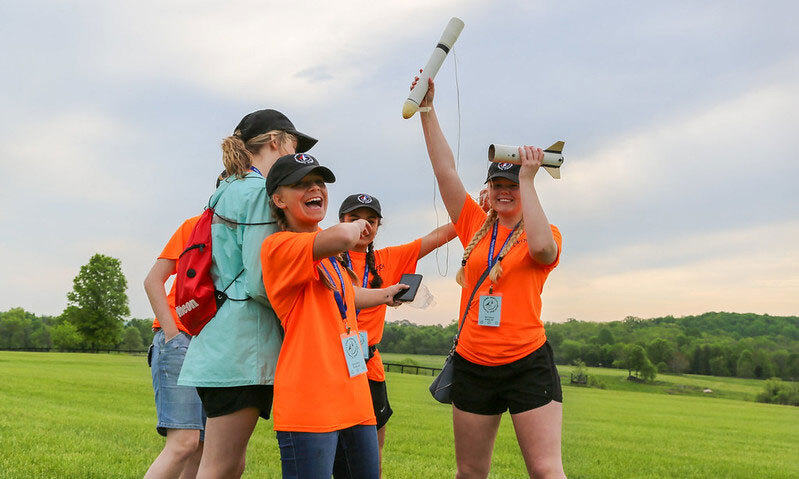
National Rocketry Competition Achieves Liftoff With Perseverance
The American Rocketry Challenge was sidelined last year, but organizers rose to the occasion and came up with an inventive plan so students could still launch their rockets.
People often say, “it’s not rocket science,” but sometimes it is. Especially when you are trying to figure out how to get a nationwide rocketry contest, which was postponed last year because of the pandemic, off the ground in 10 different locations across the country—and stay within COVID-19 safety guidelines.
The American Rocketry Challenge (TARC) is the world’s largest student rocket contest and, since its launch in 2002, it has inspired more than 80,000 middle and high school students to explore education and careers in the science, technology, engineering, and math (STEM) fields.
TARC achieved liftoff this year, in accordance with all federal, state, and local health guidance, thanks to some intricate planning, coordination, a heavy dose of inspiration, and—you guessed it—rocket science.
“We always want to protect the health and safety of our entire community, but still honor all the hard work and perseverance our students embody, which makes them future leaders of the aerospace and defense industry,” said Jeremy Davis, TARC program manager at the Aerospace Industries Association (AIA).
AIA partners with the National Association of Rocketry (NAR) to sponsor the event with more than a dozen industry stakeholders. This year, 615 teams representing 45 states, the District of Columbia, and the U.S. Virgin Islands designed and built model rockets in hopes of qualifying for the national finals. One hundred teams advanced to the finals to compete for $100,000 in prizes and the national champion title.
Davis and Trip Barber, NAR’s TARC manager, began planning the event in August 2020, taking into consideration all virtual contingencies from fully virtual to fully in-person. The two spoke weekly to ensure the competition would be as COVID-safe as possible, while also having a program that could still safely fly rockets.
The national finals usually take place in The Plains, Virginia, but Barber and Davis soon realized it wasn’t safe to bring everyone together in one place. “We needed a Plan B,” Barber said. They used software to create a heat map based on where the finals teams had come from over the past three years.
They didn’t know at the time who would make the finals, but that history helped them plot the places on the heat map to determine the 10 launch sites. Having multiple sites across the country meant teams would not have to travel far, and there would not be too many teams in one place at a time.
The program is also committed to including teams from diverse socioeconomic backgrounds. TARC distributed more than $100,000 in grants to eligible Title I schools to launch their own rocketry teams.
“America thrives through diverse thinking,” Davis said. “The only way we’re going to continue that progress is by reaching these communities and giving them the support they need, addressing inequities, and really elevating the successes of these students.” One of the Title I grantees from 2020 qualified for the national finals this year.
Putting together the logistics was a painstaking process, but the kids wanted it to happen. “We all want these kids to get passionate about it and pursue rocketry as a hobby, but also as a career. We get a lot of conversions,” Barber said. “We make a difference and that’s why we do it.”
(courtesy American Rocketry Challenge)






Comments